Tonight, we’re going to party like it’s 1989 as we revisit the hottest question of the caliber wars: 45 ACP vs 9mm? The late 80s through the 1990s saw a huge debate between “slow and heavy” .45 crowd and “light and fast” 9mm guys. There was more to the debate than that, including factors like bullet diameter, magazine capacity, etc. The caliber wars led to the development of the .40 S&W and a huge migration of law enforcement agencies to the .40 S&W “compromise caliber,” and now a huge swing back to 9mm.
So, which is better? The caliber wars have largely died down, save for a few diehards on internet forums. Both are handgun calibers, so the choice largely boils down to personal preference. Today, we’re going to offer our take on the .45 ACP vs. 9mm debate. As with most things in life, both have some advantages and some disadvantages. And not to let the cat out of the bag too early, but neither are rifle calibers, and a rifle would certainly be our go-to if we knew we were going to a gunfight. Let’s get into it and see where this goes!
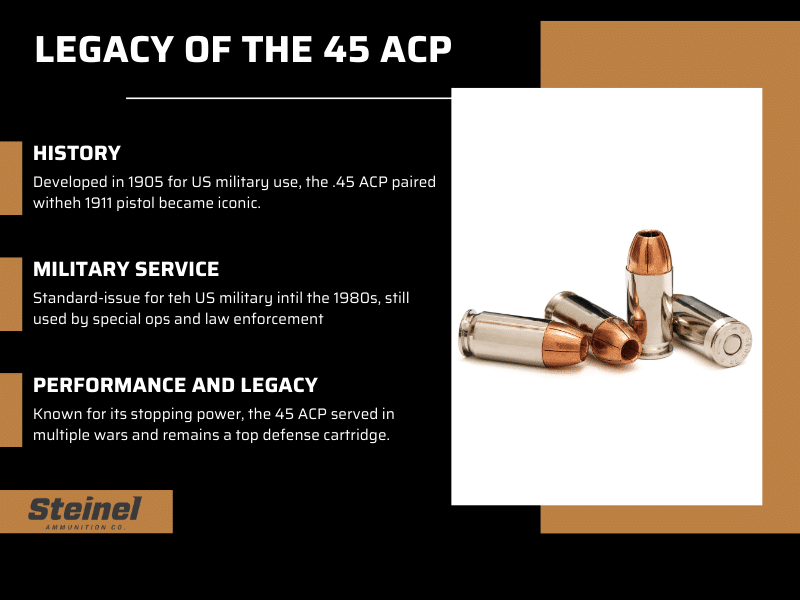
The 45 ACP: History, Performance, and Advantages
The .45 ACP (Automatic Colt Pistol) was developed for the U.S. Military way back in 1905. U.S. Army troops fighting Moro insurgents in the Philippines were armed with .38-caliber revolvers with lead round-nose ammunition, not exactly a fight-stopping cartridge. Fast forward a few years to the adoption of John Moses Browning’s masterpiece, the 1911 pistol. History was made almost instantly; the cartridge and the platform were tailor-made for each other and are still in common production today.
Military Use of 1911 and .45 ACP
The 1911 and the .45 ACP cartridge remained the standard-issue sidearm of the United States military through the mid-80s, when the military dropped it for the 9mm Beretta M9. Some military special operations outfits held on to the .45-chambered 1911 (including the unit in which the author served) well into the 2000s. So did some special law enforcement types like the FBI’s famed Hostage Rescue Team. And the 1911 is still an extremely popular handgun with American shooters.
The .45 was used by “special” folks because of the added stopping power of the larger, heavier bullet. Remember, military units are, by and large, limited to full-metal jacket ammunition. A round of .45 hardball has a significantly larger diameter than a non-expanding 9mm round. The .45 ACP has served the U.S. military in Europe and Asia in two World Wars, Vietnam, Grenada, Desert Storm, all the way into Iraq and Afghanistan. It is still a potent defensive cartridge.
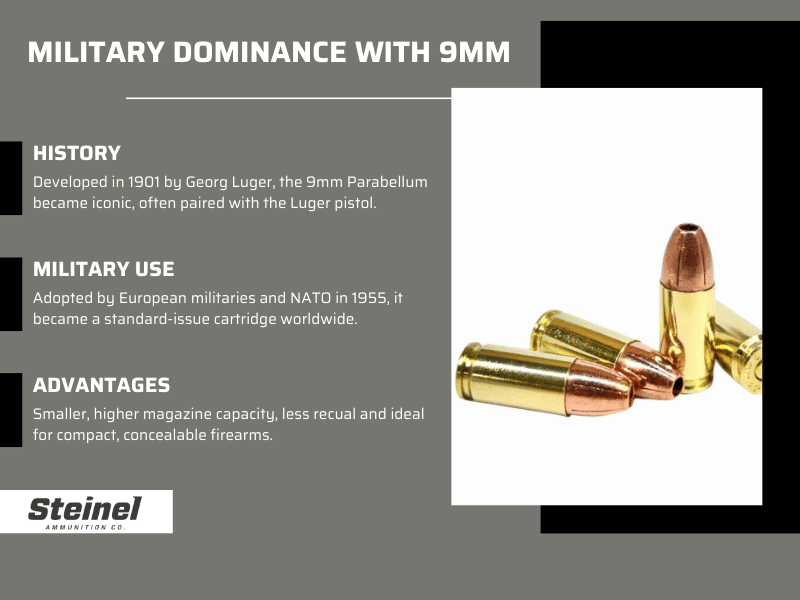
The 9mm: History, Performance, and Advantages
As venerable as the .45 ACP is, the 9mm Parabellum (aka 9×19, 9mm Luger, 9mm NATO…or just 9mm) is even older. It was born just a few years earlier in 1901, the brainchild of Austrian firearms designer Georg Luger. Like John Browning’s cartridge was eventually chambered in the iconic 1911, Luger’s 9mm would eventually find a home in the eponymous Luger pistol.
9mm in the Military
While the Luger pistol is no longer considered a viable defensive option, the cartridge it fired is. European militaries adopted the 9mm more quickly than Americans did. The 9mm being of Austrian extraction, the .45 ACP definitely had the home-field advantage with veterans of WWI and WWII who, as a group, weren’t necessarily keen on anything German. But that didn’t stop the 9mm from being a huge success, even being chambered in another iconic John Moses Browning design, the Hi-Power. In 1955, NATO adopted the 9mm as its standard handgun cartridge.
9mm Advantages
There are some advantages to the 9mm cartridge. It can be chambered in smaller guns that are easier to carry and conceal. Its smaller diameter also means it can have a higher magazine capacity, and it has less recoil. Despite being smaller than the .45, the author has also carried 9 mm-chambered Glock pistols into harm’s way, and didn’t feel undergunned whatsoever.
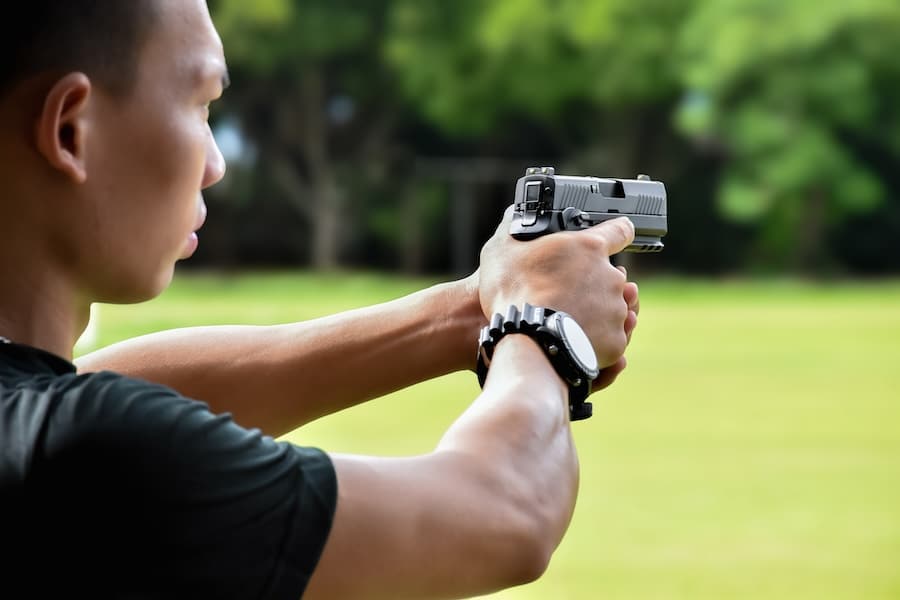
Comparing the 45 ACP and 9mm
Having discussed the history of these two cartridges, let’s put them head-to-head and see what we can find out.
Recoil & Shot Placement Considerations
One of the first considerations is felt recoil and shot placement. Speed is fine, they say, but accuracy is final, and we tend to agree. To get the desired effect on a target, you have to hit what you’re aiming at. On the other hand, rounds also have to arrive on time to make a difference; there are no timers in a gunfight, but the first one to get effective rounds on target typically prevails. As this applies to the 9mm vs .45 ACP debate, there are nearly opposite opinions backed up by the same information.
One side of the 9mm vs .45 ACP debate is that you don’t need to shoot fast if you’re accurate, meaning felt recoil is a secondary consideration. The other side believes that a handgun round, ANY handgun round, is unlikely to stop a bad guy with one round, so less recoil makes one better able to fire multiple, accurate rounds in a compressed period of time. The fact of the matter is, neither caliber offers punishing recoil. The .45 does launch heavier bullets, but does so at lower muzzle velocity. Taken together, it does recoil a little harder, but it is certainly manageable with practice. The one area where recoil becomes a slightly bigger concern is when carrying smaller pistols. Some of today’s crop of very small, lightweight handguns, like the M&P Shield, can be pretty brutal with .45 ACP, and less so with 9mm.
Muzzle Velocity & Stopping Power
The next topic of debate is muzzle velocity and stopping power. With full metal jacket ammunition, the .45 has a distinct advantage of launching bigger bullets, which create a bigger wound channel. With modern, expanding hollow point ammunition, this advantage is less clear. Hollow points expand to both create a larger diameter wound track and to prevent overpenetration, which may pose a danger to innocent bystanders in the area. Penetration is very important, however. A bullet used in self-defense must penetrate deeply enough to make contact with vital organs and/or the large, blood-carrying vessels. The .45 ACP relies on heavier bullets for deeper bullet penetration, while the 9mm depends on higher muzzle velocity to accomplish the same thing.
Magazine Capacity
And then, of course, there is the question of magazine capacity. The short answer here is: the 9mm has a higher magazine capacity, all other things being equal. The standard, full-frame, single-stack 1911 has an 8-round magazine capacity, plus one in the chamber. A Glock 17, which is both lighter and a tad smaller, has a 17-round magazine capacity. Any way you cut it, that’s a substantial upgrade in firepower. More ammo means you can spend more time ending the fight and less time reloading, and having more ammo versus less is never a bad thing. Of course, there are larger-capacity .45s like the Glock 21 (13+1), but it is also an overall larger pistol.
Decisions Based on Self Defense Considerations
Either of these handgun calibers is a perfectly viable option for self-defense. The lower muzzle velocity and heavier bullet of the .45 isn’t the handicap it is purported to be, even if it comes with a bit more recoil. The lighter bullet and smaller caliber of the 9mm aren’t a huge liability if one looks at relevant research and data.
The author has carried both a .45-caliber pistol (Iraq and Afghanistan) and a 9mm handgun (Afghanistan) into harm’s way, and was confident in both to get the job done. The main reason for this confidence was training. Training and building the ability to use your tools to their maximum potential will largely erase any differences between these two old warhorse handgun calibers, both of which of saved countless lives, on the battlefield and off, for over 100 years.
More than anything else, the 9mm vs 45 ACP debate comes down to personal preference. Which one do you feel more comfortable with? If it’s .45 ACP and bigger bullets, you’re not wrong. If it’s 9mm with smaller caliber and lighter bullets, you’re not wrong, either. What you can do with your gear is far more important than what gear you have.

Why Steinel Ammo is Your Best Choice for Premium Ammunition
Whether you choose a .45 ACP or a 9mm, you should load it with the best possible ammunition. Gear matters less than ability, but you shouldn’t handicap yourself with subpar gear. High-quality ammunition that is reliable, accurate, and has good effects on the target is important, which is why you should trust Steinel Ammunition.
We have a number of options in both .45 ACP and 9mm. In 9mm, we offer Solid Copper Hollow Points in 115 and124 grains-, and traditional hollow points in147-grains. We also offer a 124-grain SCHP load that is optimized for today’s subcompact handguns with barrels 3.5 inches or less. The SCHP offers deep penetration and controlled expansion. In .45 ACP, we provide 185- and 230-grain SCHPs, in addition to 200-grain and 230 grain Gold Dot hollow points.
Steinel Ammunition Company is Dedicated to Every Round ™. We know that each and every round we box up and ship out may be used on the worst day of your life. We want to ensure that we go to sleep at night having provided you the absolute best possible ammunition; ammunition that you can bet your life on, literally. As a result, our products are flawless, whether you choose .45 ACP or 9mm.

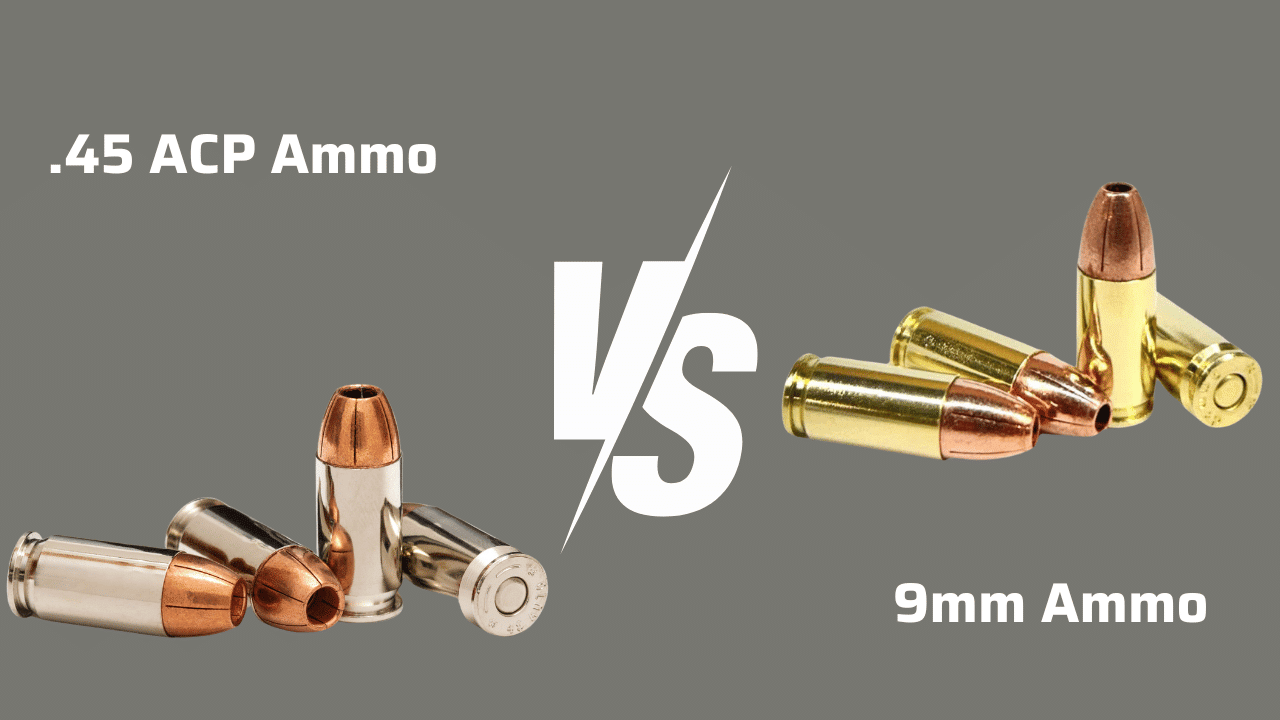
 Article written 05/06/2025:
Article written 05/06/2025:
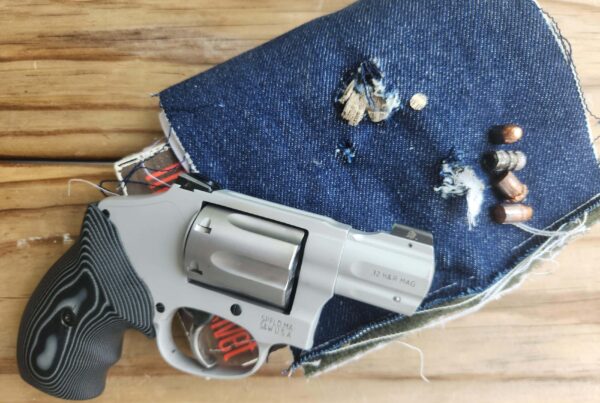
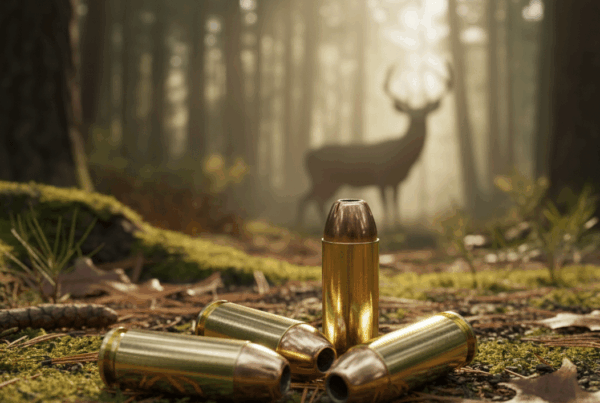


If I could only have one, to have and to hold, till death do us part…I’d have to take the .45.
I like the 9mm and carry it, shoot it, stockpile it…but my heart belongs to the .45 and you never forget your first love. Nostalgia probably isn’t good for us.
As long as you’re not rocking a Cylcops or derringer… I can’t blame you.
My 45ACP Springfield Armory original XD 4″ Service pistol is just fine with a 13+1 capacity. I do also like my 9mm pistols for range and occasional EDC. Take care.
The capacity debate is highly relevant when comparing J-Frames and even subcompacts vs higher capacity alternatives. When talking about full size, it strikes me as a duty focused concern. I assert that 14 rounds of 45 ACP would suffice for just about everyone.
There is no rational choice other than .45ACP.
Retired military, have shot and qualified with both. For capacity, 9mm wins hands down. However, for good shooters, 45ACP has better knock-down power and I’d take that first!